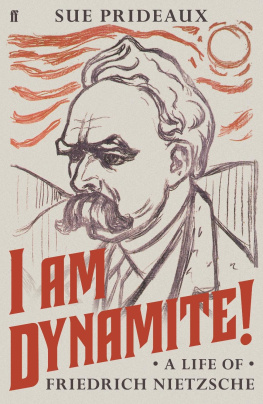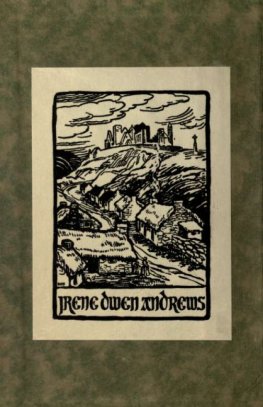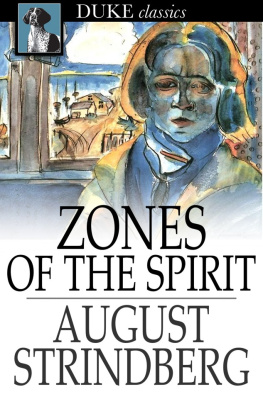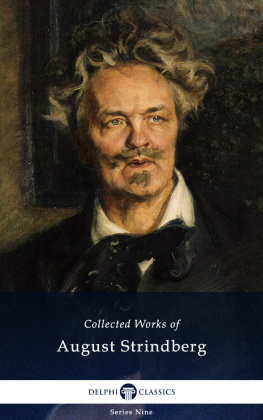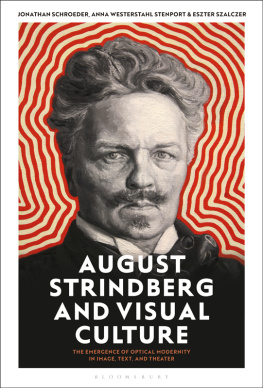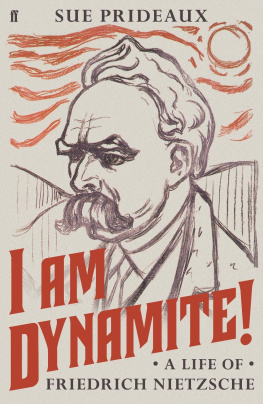

To John, Kate and Sam
Copyright 2012 by Sue Prideaux
All rights reserved.
This book may not be reproduced, in whole or in part, in any form (beyond that copying permitted by Sections 107 and 108 of the U.S. Copyright Law and except by reviewers for the public press), without written permission from the publishers.
Designed by Sarah Faulks
Printed in China
Library of Congress Cataloging-in-Publication Data
Prideaux, Sue.
Strindberg: a life / Sue Prideaux.
p. cm.
Includes bibliographical references and index.
ISBN 978-0-300-13693-7 (cl: alk. paper)
1. Strindberg, August, 18491912. 2. Authors, Swedish19th centuryBiography. I. Title.
PT 9815. P 75 2012
839.72'67dc23
B ]
2011038050
A catalogue record for this book is available from The British Library
CONTENTS
PREFACE
During the writing of this book it became apparent to me that outside Scandinavia Strindberg is best known for two things: Miss Julie and alarming misogyny.
At the time he was beginning as a writer, Scandinavia was preoccupied by the Woman Question on which Strindberg set out his position in a manifesto advocating that girls and women should have equal rights to education, jobs, votes, money and sexual promiscuity. Hardly misogyny, but such a degree of emancipation seemed like denigration to a generation that put frills on its furniture legs and its women on pedestals. It earned him the enmity of the feminists, led by the Queen of Sweden, who did not have quite such radical changes in mind for her sex and arranged for him to be prosecuted for blasphemy.
As for Miss Julie, had he written only that one play his fame would have been assured but he wrote another sixty plays, three books of poetry, eighteen novels and nine autobiographies. Some ten thousand letters survive, along with a lot of journalism. There is also the Green Sack in which he hauled drafts and notes and jottings that might one day come in useful, now reduced to sixty-nine box files in the Royal Library of Stockholm. If more of this vast agglomeration had been translated he would surely be more widely valued as one of the founders of modern literature and enjoyed as an irreverent commentator on the ideas of half a century.
The English-speaking world does not think of Strindberg as a humorist but in The People of Hems he wrote Scandinavia's great comic masterpiece. The Red Room and Black Banners were gaspingly accurate satires that like Swift's or Pope's were deliciously clef at the time, but the clef does not date them and they remain politically sharp and funny. His twelve history plays earned him the title Sweden's Shakespeare and he deserves the title for the clear shape he brings to the huge subject and the electrifying psychological duels between historical characters. He wrote the first modern history to tell the story of his nation through its ordinary people rather than through kings and battles. Today a commonplace way of writing history, in those days it was both new and feared, being seen as certainly subversive and probably anarchistic. During his time in France in the 1880s, he again went against the political grain, this time taking up an essentially conservative position against the march of the machine to write a historical record of the fast-disappearing ways of agrarian France, which still harvested by the moon and ploughed behind the horse.
As surely as the plough horse was being replaced by the mechanical plough, Strindberg was living in perplexing times. During his time at university, Darwin's Origin of Species was translated into Swedish and a greater intellectual, moral and political upheaval could hardly be imagined as the Protestant Swedish state fought the new pieties of evolutionary science. Though a naturalist and a scientist, Strindberg could never, in his words, be satisfied with ending up as no more than a barrow-load of shit to spread over the garden. He was extremely close to two painters, Munch and Gauguin, during the time that led up to each man painting his masterpiece questioning the idea that the physical world exhaustively describes reality and the self is merely an evolutionary result. When Edvard Munch's The Scream was first exhibited in Paris in 1896, Strindberg described it as A scream of fear as nature prepares to speak to the bewildered little creatures who, without resembling them at all, imagine themselves gods. He was also close to Paul Gauguin during Gauguin's last period in Paris before he returned to the South Seas to paint Who are We? Where do we come from? Where are we going?
Strindberg's own quest to answer these questions has given us the well-known image of Strindberg the alchemist hunting down the hobgoblins of the occult as he brewed gold, captured the spirits of the dead in the Cimitire du Montparnasse, recorded dreams, injected apples with morphine to see if they had nervous systems, experimented with electricity and magnetism and absinthe and everything else that Paris of the 1890s knew as Le Rve, as he worked on identifying the source of that mysterious entity which, though invisible and non-provable, undoubtedly exists: the self. Less well known is his approach to the quest for self through reason: his interest in the work of Charcot, Pierre Janet and Bernheim, the teachers of Freud, and his friendships and correspondence with pioneering scientists like Carl Ludwig Schleich whose discovery of local anaesthesia raised new questions about the brain, consciousness and self.
As a playwright, Strindberg was far less interested in social situations than his great contemporaries Ibsen and Chekhov. His growing interest lay in revealing the unconscious through the language of the conscious. Arguing that literature ought to emancipate itself entirely from art and become a science, he called himself a vivisector, writing a series of autobiographies with the purpose of dissecting the corpse of the person I have known best and learning anatomy, physiology, psychology, and history from the carcass. As a consequence he wrote outside the mainstream of his time, continually seeking novelty and invention in a completely personal way. The results are best known in two sorts of plays: his murderously claustrophobic domestic danses macabres that deal with the force-fields of submission and control pulsing between characters in the plays such as Miss Julie, The Father, Comrades, The Dance of Death, Playing with Fire and The Stronger, plays whose influence was openly acknowledged in the following generation of playwrights by Eugene O'Neill, Arthur Miller and Sean O'Casey and did not stop with them. Tennessee Williams's Streetcar named Desire can almost be read simply as an updated Miss Julie and the turbulence and psychological violence in Edward Albee's Who's Afraid of Virginia Woolf? and The Goat, or Who is Sylvia owe much to The Dance of Death. O'Casey wrote in one of his letters: Strindberg, Strindberg, Strindberg, the greatest of them all Barrie sits mumbling as he silvers his little model stars and gilds his little model suns, while Strindberg shakes flames from the living planets and the fixed stars. Ibsen can sit serenely in his Doll's House, while Strindberg is battling with his heaven and hell.
The later, more difficult category is the dream play or ghost play which found its heirs in film and in the Theatre of the Absurd, embracing irrationality and doing away with the old Aristotelian unities of sequential time and conventional space, and with them the unity of self. No coincidence that Strindberg was doing this in 1907, the same year that Picasso's Cubist
Next page

